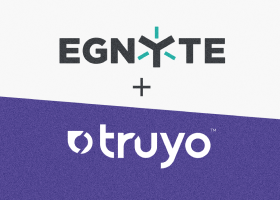What Is Digital Data?
Digital data is the electronic representation of information in a format or language that machines can read and understand. In more technical terms, digital data is a binary format of information that's converted into a machine-readable digital format. The power of digital data is that any analog inputs, from very simple text documents to genome sequencing results, can be represented with the binary system.

What Is Digital Data Storage?
Digital data storage, sometimes referred to as DDS, is a format for storing and backing up digitized information on tape, using digital audio tape or DAT technology. Files cannot be saved from computers to digital data storage (i.e., tape). Instead, specialized software (i.e., a tape management system) stores and retrieves information on the digital data storage tape drives.
Four Types of Digital Data Storage Tape Drives
- 1. DDS-1
- Up to 2 gigabytes
- 120-minute cartridge
- 2. DDS-2
- Up to 8 GB
- 120-minute cartridge
- Commonly used for small network servers
- 3. DDS-3
- Up to 24 GB of data
- 125-minute cartridge
- Uses PRML (partial response maximum likelihood), which minimizes electronics for cleaner data recordings
- Commonly used for medium-sized servers
- 4. DDS-4
- Up to 40 GB of data
- 125-minute cartridge
- Commonly used by small to midsize businesses
Each tape can be reused for up to 2,000 recordings or 100 backups at its capacity. Digital data storage tapes require cleaning every 24 hours and are discarded after 30 cleanings. Each tape usually stays in production for at least ten years.
What Is Digital Data Management?
Digital data management is the practice of collecting, storing, and providing access to information so that it can be analyzed and used. The goal of data management is to provide access to digital data in a way that protects it, while giving users the access that they need.
A digital data management system is used to define, implement, and enforce policies, practices, and procedures to provide secure, efficient access. Key components of digital data management include:
- Optimized storage to expedite retrieval of digital data in computer memory, in and across multiple clouds, and in on-premises systems
- Data security to protect digital assets from unauthorized use and maximize privacy for sensitive data
- Backup systems for digital data
- Support for managing digital data retention policies, including archiving and destruction
- Tools to transfer data between systems, users, applications, analytics, and algorithms
Digital Data Management Platforms
A digital data management platform is used to collect, analyze, and retrieve large volumes of data. Usually, it also provides a number of core functions that allow users to securely, efficiently, and cost-effectively work with digital data.
Digital data platforms typically include management tools to support common tasks, such as:
- Identifying, alerting, diagnosing, and resolving faults in the digital data management platform or other related systems
- Allocating memory and storage resources
- Making changes in the digital data storage design
- Enhancing system performance by optimizing responses to queries
Uses for Digital Data Management
The possible uses for digital data management are nearly limitless. Digital data management is used in:
- Astrophysics
- Economic research
- Financial modeling
- Genetic science
- Particle physics
- Population studies
Digital Data in Big Data
Big data, at its core, involves vast amounts of digital data, but in a wide variety of formats and gathered at mind-boggling speeds. Different types of digital data, including batch or streaming, can be collected and processed for consumption by machines or people, through big data integration. Digital data in big data is commonly referred to by its characteristics.
"Four Vs" Describe Digital Data in Big Data
- Variety
Big data can be structured, unstructured, or semi-structured and sourced from anywhere, including PDFs, emails, photos, videos, audio, forms, systems, and IoT devices. - Velocity
Big data is collected at a very high speed—from millions of different sources in fractions of a second. Every millisecond, millions of bytes of data are collected. - Volume
Besides those mentioned above, the diverse sources that drive the incredible volume of big data include:- Emails
- Feeds
- Online content
- Podcasts
- Smart devices
- Smartphones
- Social media
- Webcams
- Value
The most important thing about big data is, ultimately, its value. The tools and processing power available make it possible to decipher untold insights from big data. This value is found across all sectors, including finance, life sciences, oil and gas exploration, mining, astrophysics, and academic and commercial research.
Types of Digital Data Consumed to Create Big Data
Structured Data
- Able to be processed, sorted, analyzed, and stored in a predetermined format, then retrieved in a fixed format
- Accessed by a computer with the help of search algorithms
- First type of big data to be gathered
- Easiest of the three types of big data to analyze
- Examples of structured data include:
- Application-generated data
- Dates
- Names
- Numbers (e.g., telephone, credit card, US ZIP Codes, social security)
Semi-Structured Data
- Contains both structured as well as unstructured information
- Data may be formatted in segments
- Appears to be fully-structured, but may not be
- Not in the standardized database format as structured data
- Has some properties that make it easier to process than unstructured data
- Examples
- CSV
- Electronic data interchange (EDI)
- HTML
- JSON documents
- NoSQL databases
- Portable Document Files (PDF)
- RDF
- XML
Unstructured Data
- Not in any predetermined format (i.e., no apparent format)
- Accounts for the majority of the digital data that makes up big data
- Examples of the different types of unstructured data include:
- Human-generated data
- Text messages
- Invoices
- Text files
- Social media data
- Machine-generated data
- Geospatial data
- Weather data
- Data from IoT and smart devices
- Radar data
- Videos
- Satellite images
- Scientific data
- Human-generated data
Digital Data in Business Intelligence
Business intelligence depends on digital data. Business intelligence converts digital data into meaningful information that can be used to deliver actionable knowledge.

Three Ways Business Intelligence Uses Digital Data to Deliver Insights
- 1. Raw data from databases is extracted from any number of different systems.
- 2. The data is cleaned and transformed into a data warehouse, where data is manipulated and prepared for queries from users.
- 3. Using the business intelligence tool’s easy-to-use interface, non-technical users can access and query the data to conduct analysis or create ad-hoc reports.
Data Is Important-Digital Data Is a Critical Resource
Any information in any format is considered data. Depending on its context, all types of data can be important.
However, digital data has become a critical resource as digital data generation is far outpacing analog data generation, and paper-based information is being transformed into digital data using technologies like optical character recognition (OCR).
Digital data, when transformed with business intelligence or aggregated as big data, can become an incredibly valuable resource. It is critical in nearly every sector—from supply chains to space travel and pharmaceuticals to finance.
Egnyte has experts ready to answer your questions. For more than a decade, Egnyte has helped more than 16,000 customers with millions of customers worldwide.
Last Updated: 15th February, 2022


